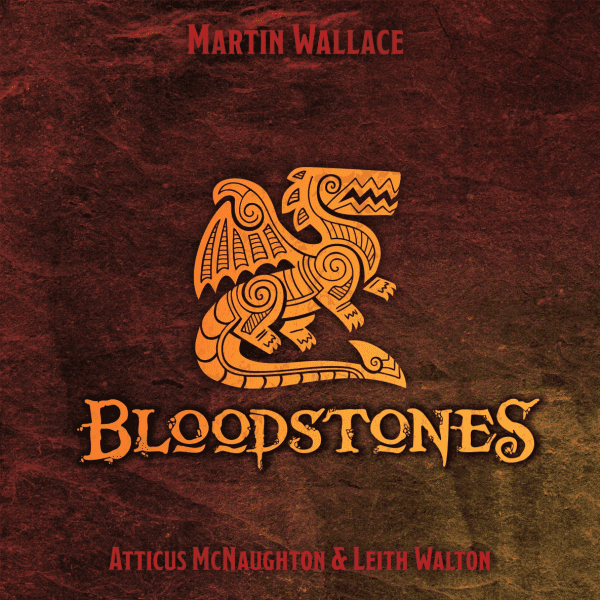
I had a chance to play Bloodstones, the new Martin Wallace game, on Tabletop Simulator recently and I wanted share my first impressions since I haven’t seen too much about it.
Bloodstones is an asymmetric fantasy war game where each player plays a different faction with a couple of unique abilities. The goal of the game is to spread out; you gain points for putting your villages on the map, defeating your opponents in battles, and capturing their villages. Each turn you draw a hand of six domino-like tiles which will function as your units, currency, and action points for the turn.
In order to place a unit on the board, you often have to pay with one or two of your other tiles by discarding them from your hand. But to take other actions like movement or spreading your villages around the board, you need to spend tiles for their action points. This leads to a difficult balance of how to best use your pieces – often your strongest units also have the most action point pips.

The main driver of points in the game is placing your villages down on the board. Each village is worth one point each when scoring. The catch is that you only score them when you are forced to reshuffle your discarded tiles back in to your supply. In a 3-4 player game you are only going to get that opportunity twice, because when every player has reshuffled their tiles a second time, the game ends. So you are incentivized to spread your villages out quickly, but trying to balance that growth with an army that is expensive to build and move around the map.
I was skeptical about the battle system going in, but came out pleasantly surprised. Some units are good in every fight, some are only good in specific terrain types, and some, like the necromancers will turn their defeated enemy pieces in to zombies. During battle, each side will draw from a bag of eight battle tiles numbered 2-5, with two of each number in the bag. The side with larger physical force (not strength, but actual tile stack) gets to draw four tiles from their bag, the other side draws three. Each side will select three tiles to use to add to their army strength, but they also have the option of replacing one of their battle tiles with one from their hand, adding the action points from their tile instead. The tiles are revealed and total strength is calculated. The winner gets points for every defeated tile, the loser has to kill one tile and retreat the others. In the game I played every battle was close and the decision to swap out one of your hand tiles with a battle tile was a tough one.

What I liked:
- The different factions and their abilities seemed interesting and unique. Some are better defensively, some are better at moving around the board, and some just have dragons.
- Like Race for the Galaxy, Glory to Rome, or a bunch of Martin Wallace’s other games, the multi-use cards (tiles) mean you have to make some difficult decisions about where to spend your resources.
- Scoring the bulk of your points when you reshuffle your tiles was interesting. There’s a temptation to play everything as fast as possible to score quickly, but being the last player with the power to decide when the game ends feels like a big end-game advantage. It will be a fun system to explore.
- Components (probably)- I was only able to play on tabletop simulator and this is currently up on Gamefound, so no physical edition exists yet, but sliding all the tiles around on the map is going to feel really good.
Disliked/Unsure:
- I played the game at 3 players and it was obvious it would be much better at 2 or 4. There are plans to release multiple maps, so some may work better at different player counts.
- Downtime/Analysis Paralysis could be a big factor with some groups. The decision space of the game is very open, and with the tiles functioning as multiple currencies it can be difficult to figure out what the best move is. Battles can also slow things down, but in my game some of that downtime was due to normal time added by playing through TTS.
Overall, my first impressions were very positive and I’m looking forward to the new maps and factions that are being revealed as the Gamefound campaign continues.
